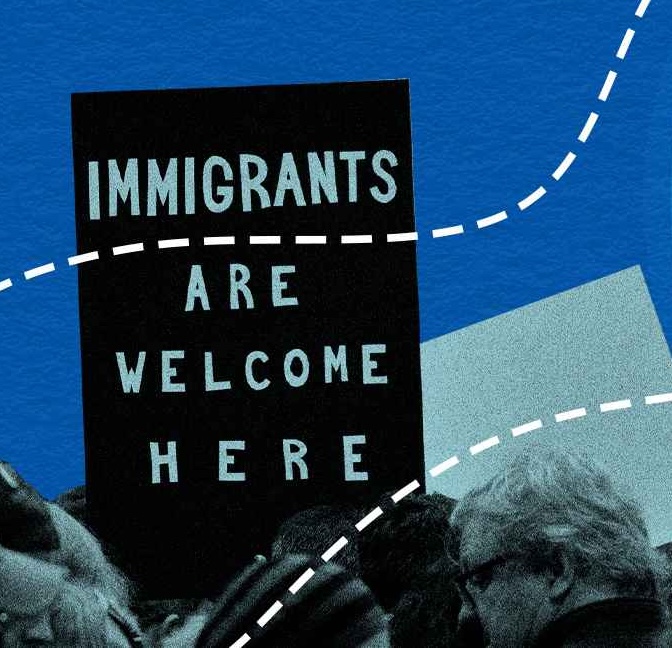As Wells considers its next budget, an agreement with Immigration and Customs Enforcement is likely to increase costs and liabilities, threaten Maine people's constitutional rights, and decrease community safety.
Take action: Ask the Wells town board to withdraw from its agreement with ICE
Following several requests for public records earlier this month, we recently acquired the agreement between the Town of Wells and U.S. Immigration and Customs Enforcement (ICE), known as a 287(g) agreement. The documents also include several related correspondences. Next Tuesday, the Wells Board of Selectmen will hear public comments on its proposed budget for next fiscal year as local leaders face increased scrutiny over the agreement, and shortly after Monmouth and Winthrop rescinded their joint application to enter into their own agreement with ICE.
Maine’s local law enforcement agencies should focus on their communities’ needs. Immigration enforcement is often rife with illegal civil rights violations and racial profiling. Agreements to actively enforce federal immigration laws threaten Maine people’s constitutional rights, erode trust in local law enforcement, keep people from reporting crimes and providing witness statements, and expose towns to costly legal liability. We hope Wells will join Monmouth and Winthrop by reversing plans to use community resources for the president’s ‘mass deportation’ agenda.
Here's what we found in the public records:
- Wells has agreed to support ICE in ways that have exposed other municipalities to costly legal settlements because they violated a person’s civil rights.
- The agreement authorizes Wells police officers to interrogate people they suspect of being non-citizens. A 2014 report found this to be an open invitation to racially profile community members, and a 2022 study found that it fosters similar profiling by other nearby departments.
- The training requirements for Wells police officers to begin conducting federal enforcement are minimal and cannot prepare officers to appropriately enforce such a complex area of law.
- Town officials moved very quickly to enter into the agreement. Emails between the town and ICE show an invitation to enter into an agreement on February 21, 2025. Wells submitted a signed agreement to ICE on March 28, 2025. The agreement was finalized by ICE on April 2, 2025.
- Wells has agreed to detain and transport people it believes to be non-citizens who are arrested for alleged civil immigration violations without any limitations, an enormous use of local resources for federal enforcement.
Immigration Enforcement Often Violates Constitutional Rights
By supporting federal immigration enforcement, it is likely that Wells may violate a person’s constitutional rights. ICE detainers are already legally dubious, and the agreement goes even further by allowing Wells to independently issue ICE detainers with minimal oversight. Detainers exist outside of due process protections. This violates Fourth Amendment protections because there is no review or examination of probable cause from a judge as a neutral third party.
Without the safeguards of a judicial warrant, ICE detainers have repeatedly resulted in the illegal detention of people who have not violated any immigration laws and are not deportable, including United States citizens and immigrants who are lawfully present in the United States. According to ICE records, the agency erroneously issued more than 800 detainers for United States citizens and over 28,000 for legal permanent residents between 2008 and 2012.
287(g) Agreements Divert Limited Local Resources
287(g) agreements also use significant local resources. Local departments must cover the costs of salaries, benefits, overtime, and administration. Many places have spent millions, with some even raising property taxes to cover costs. Wells has proposed hiring three more police officers at a cost of $126,509 (excluding benefits, overtime, and other costs). The proposed hirings are likely because Wells committed to having 15 officers trained to serve under the agreement.
Additionally, municipalities have lost millions in legal settlements after violating people’s civil rights when enforcing federal immigration law. For instance, Maricopa County, Arizona, paid $43 million following lawsuits related to its 287(g) program, largely due to racial profiling. Other municipalities have spent thousands to settle individual claims after they have illegally detained people on ICE orders: Los Angeles County paid $255,000 to settle one person’s claim in 2017 and San Francisco paid $190,000 to settle a claim after local officials illegally turned a person over to ICE.
Immigration Enforcement Harms Public Safety
287(g) agreements erode trust in local law enforcement and make communities less safe. People who lack proper immigration documentation are less likely to report crimes, call for help, share witness statements, and testify in court. The Major Cities Chiefs Association said that “without assurances that contact with the police would not result in purely civil immigration enforcement action, the hard-won trust, communication and cooperation from the immigrant community would disappear.”
Pending Records Requests
Earlier this month, we sent several records requests to state and federal officials seeking information about how local law enforcement may be supporting “mass deportation” efforts. As of Wednesday, April 30, the Town of Wells was the only one to complete the request. This page will be updated as more requests are completed.
After the public hearing on Tuesday, May 6, the board is scheduled to have a second reading of the budget and vote on Tuesday, May 21.
Learn More
Maine's people deserve to know how their local officials are using community resources to support "mass deportation" efforts. See the Wells records in the PDFs at the bottom of this page. Read more about this issue and see what we are doing to uncover similar activities throughout the state here.
Date
Wednesday, April 30, 2025 - 1:15pmFeatured image





